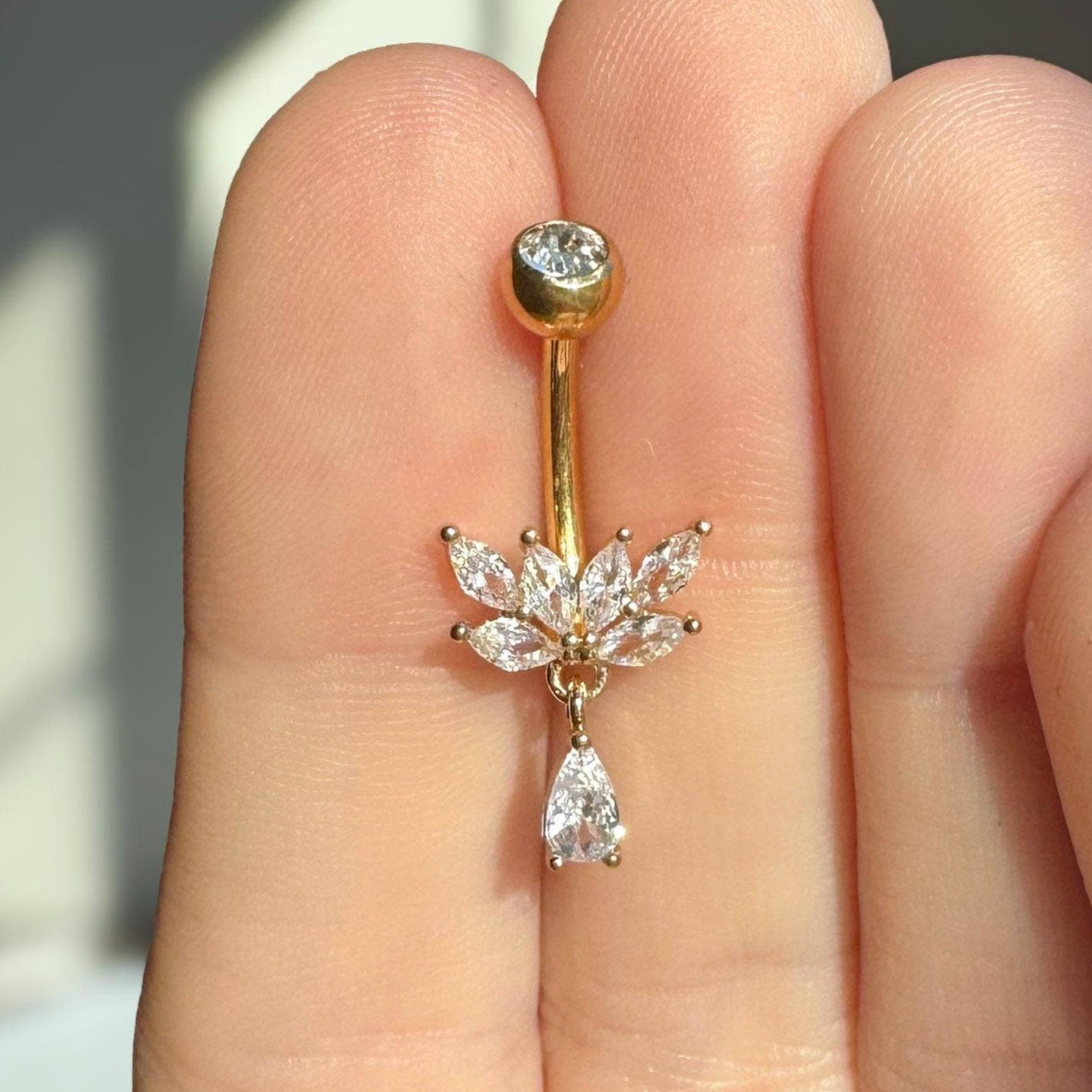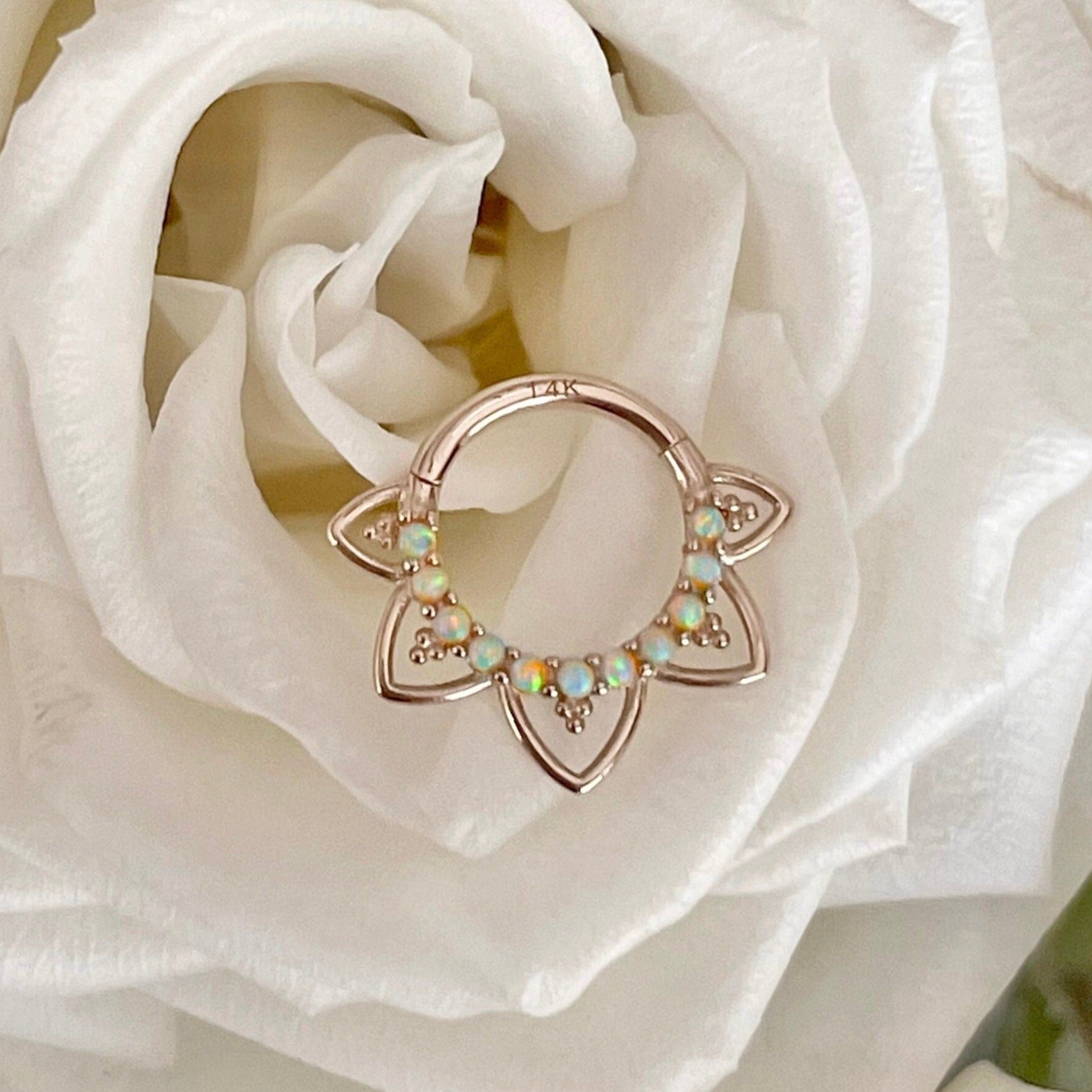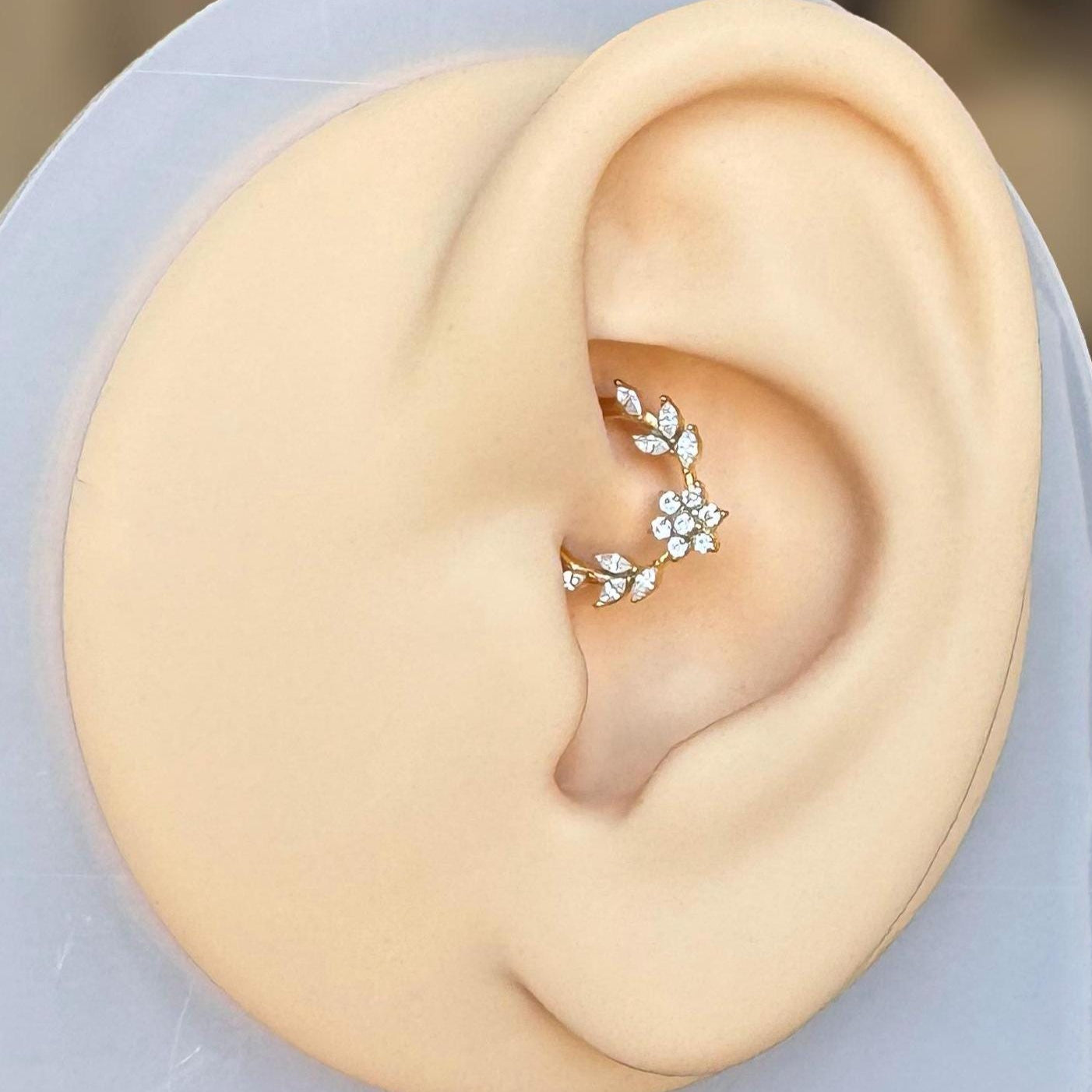Body jewelry materials explained: titanium, 316L surgical steel, gold—what’s hypoallergenic & longest-lasting for cartilage, daith, belly button & septum rings.
Materials Guide
Titanium
Implant-grade titanium refers to a very high-quality, biocompatible type of titanium that’s safe to use inside the human body. It’s commonly used in medical implants (like joint replacements, dental implants, and surgical tools) because it doesn’t react with body tissues, is highly resistant to corrosion, and is unlikely to cause allergic reactions.
Why It's Great for Body Jewelry
- It’s nickel-free, making it ideal for people with sensitive skin or metal allergies.
- It won’t rust or tarnish over time, even with exposure to bodily fluids or moisture.
- It’s much lighter than stainless steel, yet incredibly durable.
- Since it’s biocompatible, your body is less likely to reject it or develop irritation.
Surgical Steel
Surgical steel is a type of stainless steel specifically designed for medical and surgical use. It’s known for being durable, corrosion-resistant, and generally safe for use in the body. While not quite as hypoallergenic as implant-grade titanium, certain types of surgical steel are still considered safe for most people when used in body jewelry.
Why it's Popular for Body Jewelry:
- Durable & Strong: It holds up well to daily wear and tear.
- Corrosion-Resistant: It doesn’t easily rust or tarnish, making it a good long-term option.
- Smooth Surface: Its polished finish helps reduce friction and irritation.
- Cost-Effective: It’s less expensive than titanium while still offering solid performance.
What to watch out for: If you’re sensitive to nickel or prone to allergic reactions, titanium might be a better choice—especially for new piercings. Surgical steel can still contain trace amounts of other metals including nickel.
316L & 316LVM: These are the most common grades used in body jewelry. Of the two, 316LVM is a higher-quality, vacuum-melted version with better purity and consistency.
Stainless Steel
Stainless steel is a strong, corrosion-resistant metal alloy made primarily of iron, carbon, and chromium. The chromium content (usually at least 10.5%) is what gives stainless steel its signature resistance to rust and tarnish. It’s used in everything from surgical tools and kitchen appliances to fashion accessories—and yes, jewelry.
Stainless steel has become a popular material in the jewelry world because it’s affordable, low-maintenance, and incredibly durable. It’s especially popular in men's jewelry, fashion jewelry, and industrial-style pieces.
Why it's great:
- Tarnish & Rust Proof: It holds up well against moisture and air, so it won’t corrode or discolor with proper care
- Extremely Durable: Great for everyday wear—it resists scratches and dents better than softer metals.
- Affordable: It gives the look of silver or platinum at a much lower price point.
- Low Maintenance: Requires minimal polishing and cleaning.
- Versatile Finish: Can be polished to a high shine or brushed for a matte, modern look.
What to Watch Out For
- Nickel Content: Some stainless steel alloys contain small amounts of nickel, which can cause irritation in people with metal sensitivities.
- Heavier Weight: Stainless steel is heavier than materials like titanium or aluminum, which may matter for larger pieces or earrings.
- Not Ideal for Initial Piercings: While surgical-grade stainless steel is used in body jewelry, implant-grade titanium is often preferred for new piercings due to its superior biocompatibility.
Stainless steel is a tough, stylish, and budget-friendly option for everyday jewelry. While it may not have the prestige of precious metals, it offers excellent longevity and a sleek look—especially if you’re shopping for fashion-forward or low-maintenance pieces.
Solid Gold
Solid gold is exactly what it sounds like—gold that isn’t just plated or filled, but made primarily of gold throughout. It’s measured in karats (K), which indicate how much of the metal is pure gold versus other alloys (like copper, silver, or zinc) used to add strength and durability.
Karats:
- 24K is 100% pure gold (very soft and rarely used in jewelry).
- 18K is 75% gold, 25% alloy.
- 14K is 58.3% gold, 41.7% alloy.
- 10K is 41.7% gold, 58.3% alloy (and the minimum karat level legally considered "gold" in many places).
Choose the Right Karat: For body jewelry especially, 14K and 18K are the sweet spots—durable, beautiful, and generally well-tolerated by most skin types.
Nickel Content: Some lower-karat gold alloys (like 10K) may contain nickel—always err on the side of caution if you have sensitivities
Why It’s Great:
- Hypoallergenic (mostly): Higher karat gold (like 14K or 18K) is generally safe for most people, though those with metal allergies should avoid lower karat levels that may contain more nickel or other reactive metals.
- Doesn’t Tarnish: Real gold won’t rust or corrode, even with long-term wear.
- Beautiful Appearance: Gold has a natural luster and richness that other metals can’t replicate.
- Long-Lasting Investment: Unlike gold-plated jewelry, solid gold holds its value and won’t wear down to a base metal over time.
Gold Filled
Gold filled (or gold fill) jewelry is a high quality alternative to solid gold, and consists of a thick layer of solid gold mechanically bonded to a base metal core (usually brass or copper). It is not gold-plated and should not be confused with solid gold. (See diagram on types of gold)
Material Composition
- Gold layer: Legally, it must contain at least 5% (or 1/20) of the item’s total weight in gold. Commonly used purities: 12k, 14k, or 18k gold.
- Core/base metal: Typically brass or copper, sometimes sterling silver.
- Bonding method: Gold is pressure bonded to the base metal using heat, making the layer more durable than gold plating.
Thickness and Durability
- The gold layer on gold fill jewelry is ~100 times thicker than standard gold-plated jewelry.
- It can last decades with proper care, often outlasting plated items by years.
- It’s tarnish-proof, waterproof, hypoallergenic (for most people), and suitable for everyday wear.
Why it's great: It gives you the luxe look of solid gold without the steep price. With a thick layer of real gold, it’s tarnish & waterproof, hypoallergenic, and tough enough for everyday wear—beautiful, practical, and made to last.
Gold Vermeil
Gold vermeil is a type of high-quality gold-plated jewelry made by layering a thick coating of real gold over a base of sterling silver (92.5% pure silver). To legally qualify as "vermeil" in many countries, the gold layer must be at least 2.5 microns thick and at least 10 karats in purity—though higher-quality pieces often use 14K or 18K gold.
Why it's great:
- Affordable Luxury: Offers the look of solid gold at a more accessible price.
- Sterling Silver Base: Hypoallergenic and high-quality compared to other base metals.
- Longer-Lasting than Plated Jewelry: The thicker gold layer makes it more resistant to fading or tarnishing (with proper care).
- Great for Statement Pieces: Ideal for rings, necklaces, and earrings where you want a gold look without the solid gold price tag.
Things to Keep in Mind
- Not Solid Gold: Over time, the gold layer may wear down, especially with frequent exposure to water, sweat, or friction.
- Care Is Key: To keep it looking its best, avoid harsh chemicals, excessive moisture, and rough handling. Store in a soft pouch or jewelry box.
- Not Ideal for Everyday Wear Items: It’s best for occasional wear rather than daily-use pieces like wedding bands or body jewelry.
Gold Plated
Gold-plated jewelry is made by applying a thin layer of real gold over a base metal—typically brass, copper, or stainless steel—using a process called electroplating. The gold layer is usually quite thin (often less than 0.5 microns), which means it can eventually wear off, revealing the metal underneath.
Why it's great:
- Affordable & Fashion-Forward: Great for trying out new styles or trends without a big investment.
- Visually Similar to Solid Gold: At first glance, many gold-plated pieces look almost identical to the real thing.
- Widely Available: Found in everything from costume jewelry to fashion collections and boutique brands.
What to watch for:
- Prone to Tarnishing & Fading: The thin gold layer can wear away over time, especially with frequent exposure to water, sweat, friction, or cosmetics.
- Not Hypoallergenic: The base metal underneath can contain nickel or other irritants that may cause allergic reactions once the plating wears off.
- Shorter Lifespan: With regular wear, the gold finish can fade within months, though gentle care can extend its life.
Other
If not specified, our jewelry may contain other materials! Please send us a message if you have any questions regarding the material of a piece.
Materials Disclaimer:
Our jewelry is crafted from materials commonly used in jewelry such as surgical steel, titanium, and other metals that are generally considered safe. However, sensitivities and allergic reactions to metals vary from person to person.
By purchasing from this website, you acknowledge and agree that:
- You are responsible for knowing your own allergies, sensitivities, and skin conditions.
- We make no guarantees or representations that our products are suitable for your specific needs or skin type.
- You use all products at your own risk. We are not liable for any adverse reactions, including but not limited to allergic reactions, skin irritations, infections, or other medical issues resulting from the use or misuse of our jewelry.
- If you experience discomfort or an adverse reaction, discontinue use immediately and consult a qualified healthcare professional.
Our products are not intended to diagnose, treat, cure, or prevent any medical condition. If you have any doubts about the suitability of our jewelry for your skin or piercing, we recommend consulting with a professional piercer or medical provider before use.






